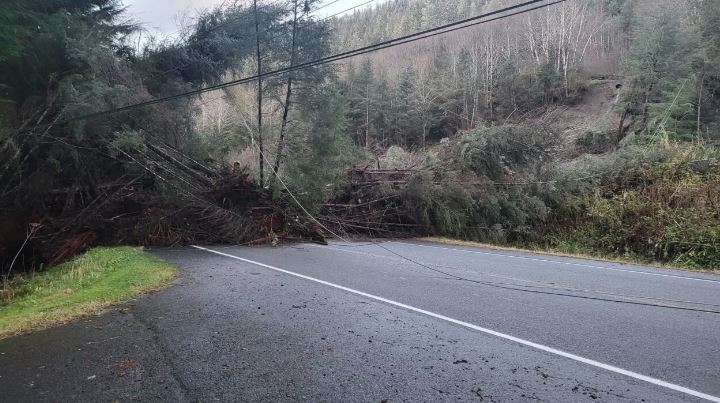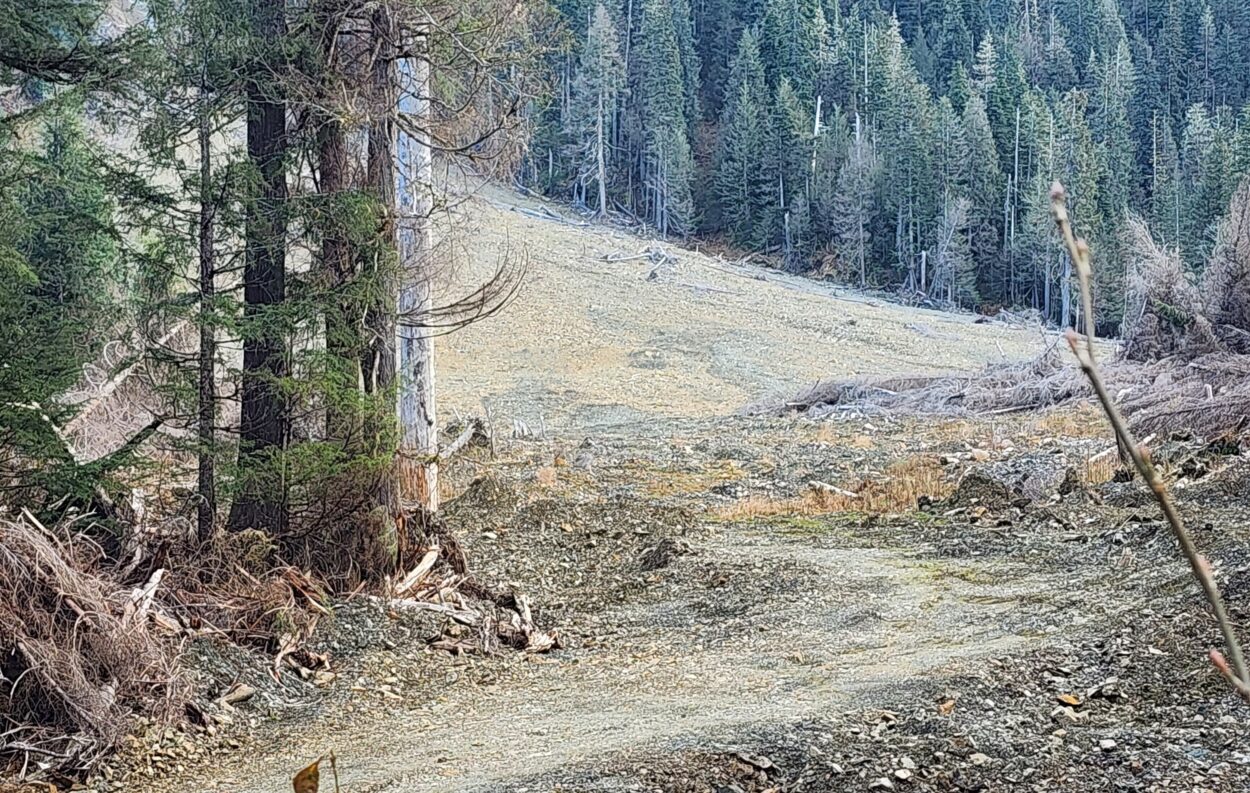
A regional working group in Southeast Alaska wants to create a landslide warning system – a tool that will monitor the region’s hazardous weather and warn residents of potential risks of slides. Sitka already has a system, but as CoastAlaska’s Angela Denning reports, the new working group is brainstorming ways to serve even Southeast’s smaller communities.
Eleven people have died in Southeast landslides since 2015 – three in Sitka, two in Haines, and six in Wrangell. And there is reason to believe that the number could grow.
“I think we can all imagine that landslides could increase,” said Eric Bilderback, who manages several landslide hazard scientific projects for the U.S. Geological Survey.
He says climate change is impacting the weather and then the weather is impacting the landscape.
“We don’t know for sure whether that landscape response is going to lead to specifically more landslides or more frequent landslides or different types of landslides. We just know that there is going to be a change in Southeast,” Bilderback said.
Lisa Busch saw this coming. She runs the Sitka Sound Science Center and she helped win millions of dollars in grant funding to set up a warning system in Sitka after the deadly 2015 landslide. Now, she’s working with half a dozen communities in the region to get one of their own, through a project called Kutí, which means weather in Lingít. It’s much needed, she says, but the funding is not sustainable.
“We’re seeing the environment change,” said Busch. “Why should we have to compete for grants to stay safe or to help our communities stay safe?”
The Science Center is spearheading a regional landslide working group, bringing in tribes and local governments from all over Southeast along with state and federal agency experts like Bilderback. They held their first meeting in early March in Sitka.
Busch says time is of the essence – climate change is happening now.
“We know we probably can’t stop that,” she said. But hopefully, we could stop future human tragedies. So, if you had a warning, you know, you could evacuate your home. That’s the idea.”
Southeast Alaska is mostly steep slopes covered in trees. It’s also a temperate rainforest with some communities seeing over 100 inches of precipitation a year.
The region’s recent landslides are caused by a lot of rain in a short amount of time. The number of slides is staggering. Last fall there were dozens region-wide and several roads were cut off – on Prince of Wales Island, near Metlakatla in southern Southeast, and near Hoonah in the north.

Jeromy Grant is with the Hoonah Indian Association, and a member of the working group.
“It’s not just the community that we’re concerned about landslides, we have a huge road network,” Grant said.
He says his diet, like others in Hoonah, is 70 percent subsistence foods and past landslides have cut off some important roads that lead to subsistence areas.
“For hunting, gathering, you name it,” said Grant. “That essentially is, you know. . . that is my religion out there. . . So that’s my access to everything.”
Grant says the group, by pooling their resources and knowledge, could help Southeast residents become better prepared.
“This is such a growing concern, because weather seems to be getting worse and worse,” he said. “And these events are becoming more and more frequent, especially with all the tragedies happening. It’s not a matter of if, it’s a matter of when.”
Sitka’s Tribe has been through the process already. Working with the Sitka Sound Science Center, the Tribe spent three years collaborating on the local warning system. Tammy Young works in the Resource Protection department. She says the Tribe spent months meeting with in-town organizations like the school district to see what would work locally. What’s the best way to forecast risks? What’s the best way to communicate with residents, especially those living off the grid or who are housing insecure?
“It’s a concern if a person doesn’t have a way to communicate back and forth,” Young said. “We might think that everybody has cell phones in this day and age. But that’s not true in smaller villages, where it is actually much more probable that there are landslides. Not everybody has a smartphone.”
In Sitka, they created an online app and pushed the information out through many avenues including on utility bills. Identifying the unique circumstances of individual communities is a working group priority.
Advances in technology have made monitoring landslides easier. The infrastructure supporting the equipment – everything from solar power to batteries to cell phone service – has gotten better and cheaper.
But installation and maintenance will still take money and a bit of stamina, says Bilderback, the USGS scientist. The region needs weather and soil monitoring equipment set up on the hill slopes.
“It can’t just be down at the airport,” Bilderback said. “Southeast. . .it’s so big, and locating any equipment at elevation, it’s going to require support.”
Support in a sustainable way – that’s the idea behind the regional landslide project – building something similar to other government-funded programs like monitoring for volcanoes or tsunamis. If it works in Southeast Alaska, perhaps it could work in other areas of the country, which are also seeing more landslides.






























